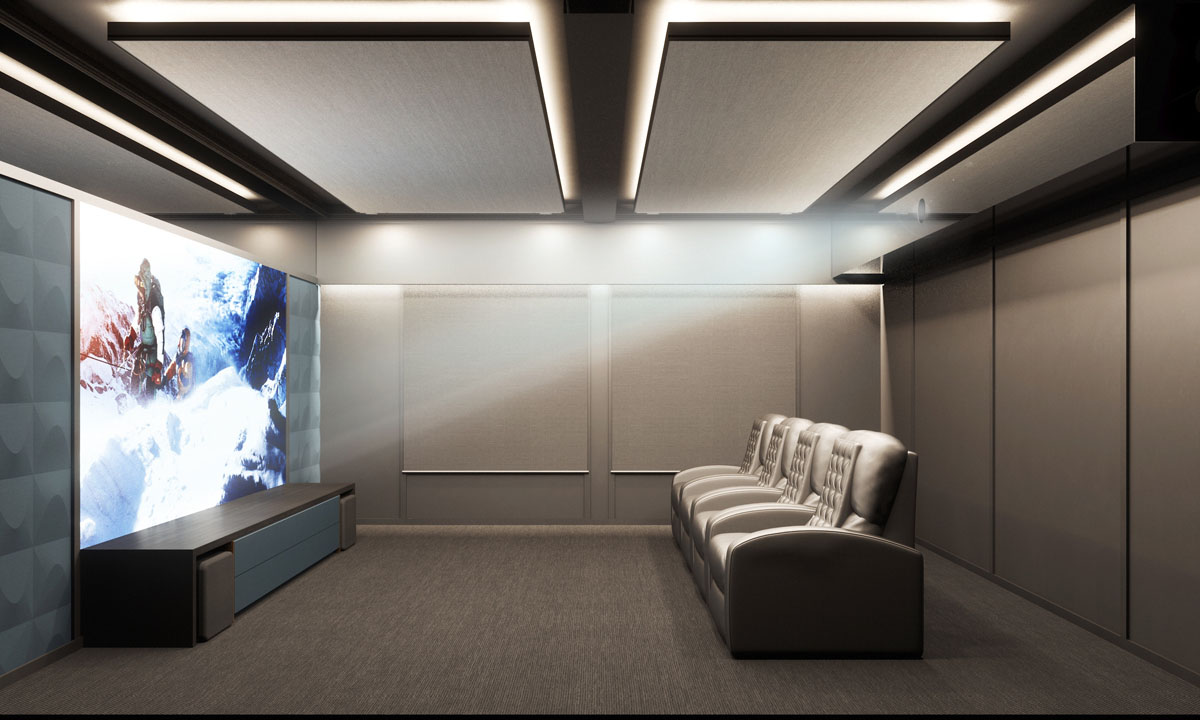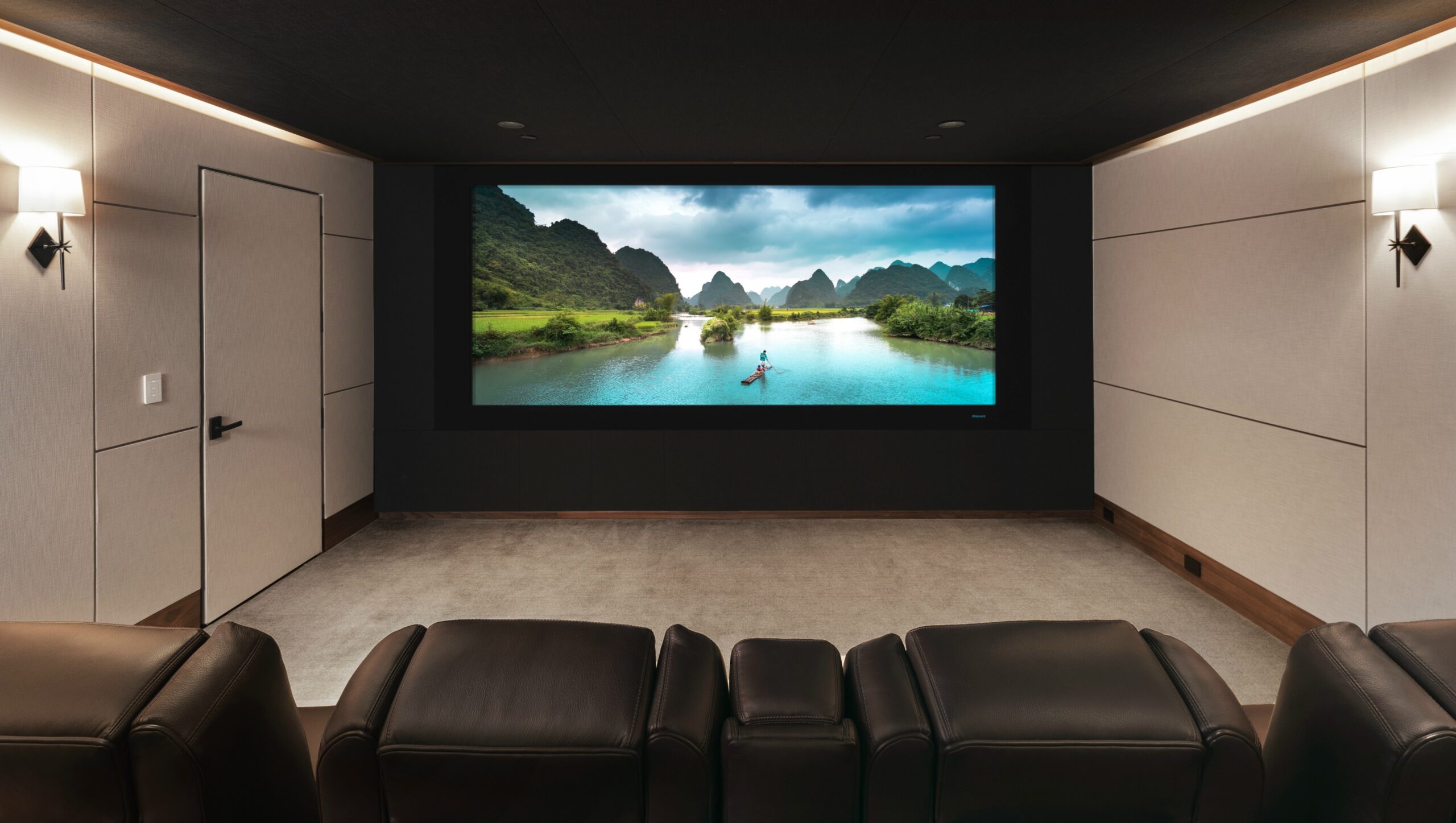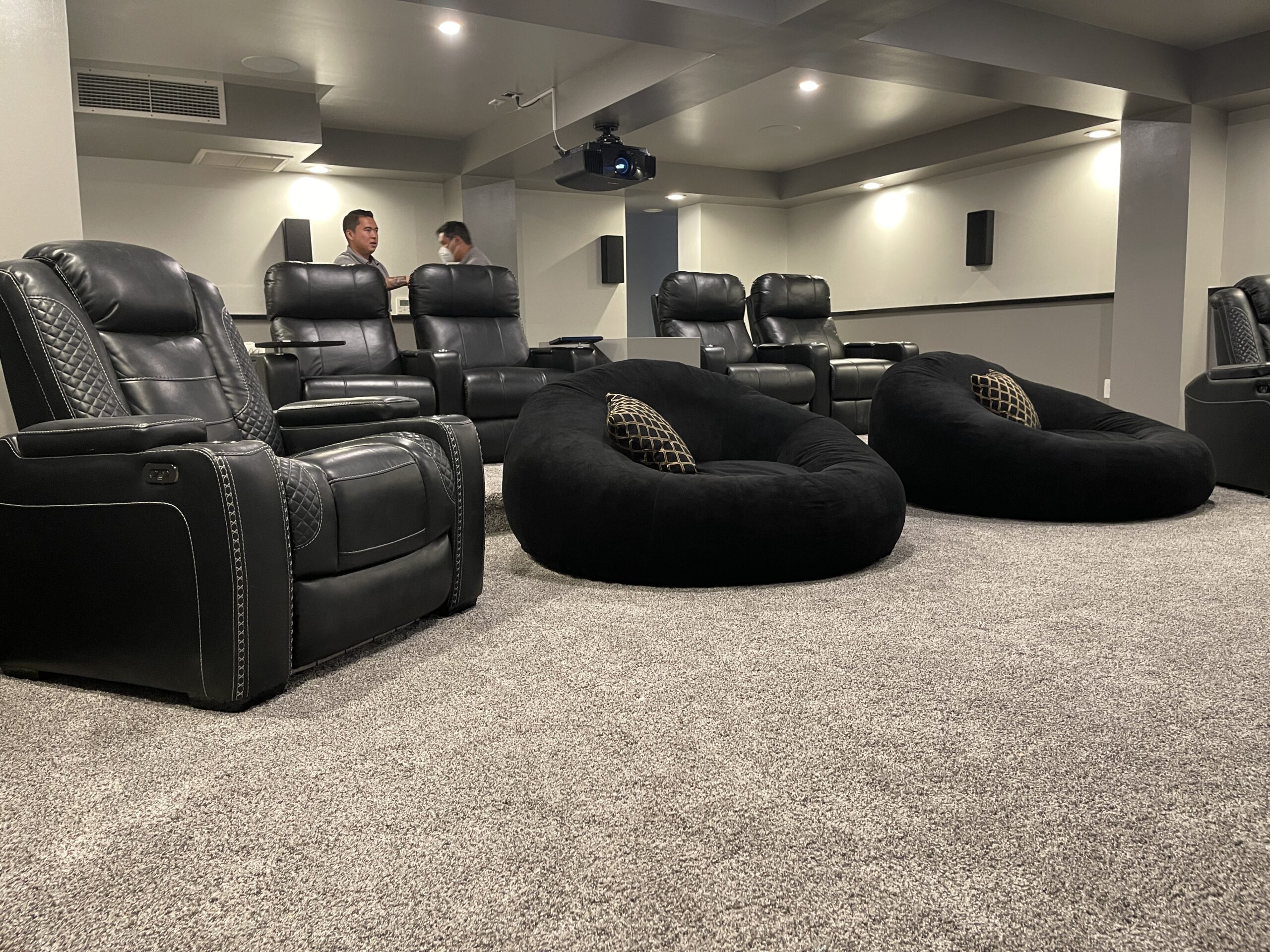Expert Home Theater Tampa Design for Every Budget
Expert Home Theater Tampa Design for Every Budget
Blog Article
Home Theater 101: Every Little Thing You Required to Know for a Motion Picture Experience at Home
Creating a home movie theater that equals the cinematic experience of a business theatre includes careful consideration of several parts, consisting of screen choice, stereo, and room format. Each aspect plays a critical duty in achieving the preferred setting and performance. Whether you are pondering the suitable display size or the details of surround noise, recognizing these basics is essential. As we check out these critical elements, it ends up being evident that the options made can considerably impact your total viewing experience, leaving one to consider just how these decisions will certainly form your individual cinema.
Picking the Right Screen
When setting up a home movie theater, choosing the best screen can make or damage the checking out experience - home theater design tampa. The screen serves as the centerpiece of your configuration, influencing picture high quality, checking out angles, and general aesthetic. Trick aspects to think about include display kind, dimension, and resolution
Initially, determine the proper display size based upon your space dimensions and seating range. A general standard is to rest around 1.5 to 2.5 times the diagonal screen dimension for ideal viewing. Next off, choose in between numerous display kinds, such as fixed-frame, motorized, or retracting displays, each offering unique benefits. Fixed-frame displays generally offer the most effective image top quality, while mechanized choices permit flexibility precede usage.
Resolution is an additional vital variable. For a genuinely immersive experience, consider a display made for 4K or perhaps 8K material, ensuring sharpness and clearness. In addition, take into consideration the screen's gain, which impacts illumination and comparison; a higher gain can improve illumination in well-lit areas, while a reduced gain may be preferable for darker environments.
Choosing Audio Equipment
Audio devices is a vital element of any kind of home theater system, considerably enhancing the overall watching experience. The option of audio equipment can figure out the depth, quality, and immersion of audio, important for developing a motion picture ambience.
When picking audio devices, think about a border stereo, which normally includes a receiver, several speakers, and a subwoofer. A 5.1 or 7.1 channel system is advised, where the first number stands for the audio speakers and the second the speaker, supplying an immersive soundscape. The receiver is the heart of the system, managing audio and video clip signals, and need to sustain contemporary formats like Dolby Atmos for an improved spatial experience.
Quality audio speakers are necessary; try to find designs that provide a balanced sound account with great bass action. Floor-standing speakers can produce richer audio, while shelf alternatives conserve area. Furthermore, take into consideration wireless alternatives for simplicity of installation, although wired systems commonly provide exceptional performance.

Optimal Seating Plans
Creating an ideal home theater experience hinges dramatically on optimal seating arrangements. The plan of seats plays a vital function in both convenience and seeing top quality, directly influencing the general cinematic experience.
First, consider the display dimension and seeing distance. An usual guideline is to position seats at a distance about 1.5 to 2.5 times the angled dimension of the display. This makes sure an immersive experience without straining the eyes.
Next, elevation is critical. The back rows must be higher than the front to avoid obstructions if your seats is in a tiered style. For level seating, make certain that the front row is not as well near the display, and that every person has a clear line of view.
Furthermore, take into consideration the plan in terms of social characteristics. Group seats can improve the communal experience, while private seats may be liked for personal watching.

Lastly, prioritize convenience with ergonomic seats that supports prolonged viewing durations. Integrating recliners or supported seats can considerably enhance the experience, making the home theater a preferred location for both amusement and leisure.
Lighting and Ambiance
Efficient lights and atmosphere are essential elements of a properly designed home cinema, as they substantially affect the viewing experience. The ideal lights can boost the cinematic feeling, while bad options can detract from it. For ideal outcomes, consider a split illumination strategy that includes ambient, task, and accent lighting.
Ambient lights provides general illumination, making certain that the room is not completely dark, which can strain the eyes. Dimmer switches are extremely suggested, permitting changes based on the material being watched. Task lighting, such as wall sconces or floor lamps, uses useful lighting for tasks like reading or browsing the area without disrupting the total ambience.
Accent lighting can be utilized to highlight architectural features or develop centerpieces, adding depth and interest to the area. LED strip lights behind displays or along racks can supply a subtle glow that boosts the visual experience navigate to this site without frustrating the audience.

Wiring and Installation Tips
A well-planned electrical wiring setup is important for accomplishing ideal performance in your home cinema system. Correct circuitry not just makes sure high-grade sound and video signals however also boosts the total aesthetic of your room. Begin by drawing up your design, identifying where each part will certainly be placed, including your screen, audio speakers, and receiver.
When choosing cables, prioritize top notch, suitably evaluated circuitry to minimize signal loss. HDMI cables need to be utilized for video links, while speaker cable ought to match the requirements of your speakers and amplifier. Choose in-wall ranked cords to comply with safety and security standards and preserve a clean appearance.

Final Thought
In summary, developing an extraordinary home movie theater experience calls for mindful factor to consider of various elements, including screen selection, audio devices, seating setups, lights, and wiring. By focusing on these factors, a cinematic environment can be effectively reproduced, permitting for immersive watching experiences that rival conventional movie theater settings.
Creating a home theater that rivals the cinematic experience of a commercial theatre involves mindful consideration of multiple components, including screen option, sound systems, and room format.When establishing up a home movie theater, picking the right display can make or damage the checking out experience. learn the facts here now Next, select in between different screen kinds, such as fixed-frame, mechanized, or retractable screens, each offering distinct advantages. For an absolutely immersive experience, take into consideration a display made for 4K or also 8K material, making sure sharpness and Visit Your URL clarity.In summary, creating an extraordinary home cinema experience needs careful consideration of different components, consisting of screen selection, audio tools, seating arrangements, lighting, and wiring.
Report this page